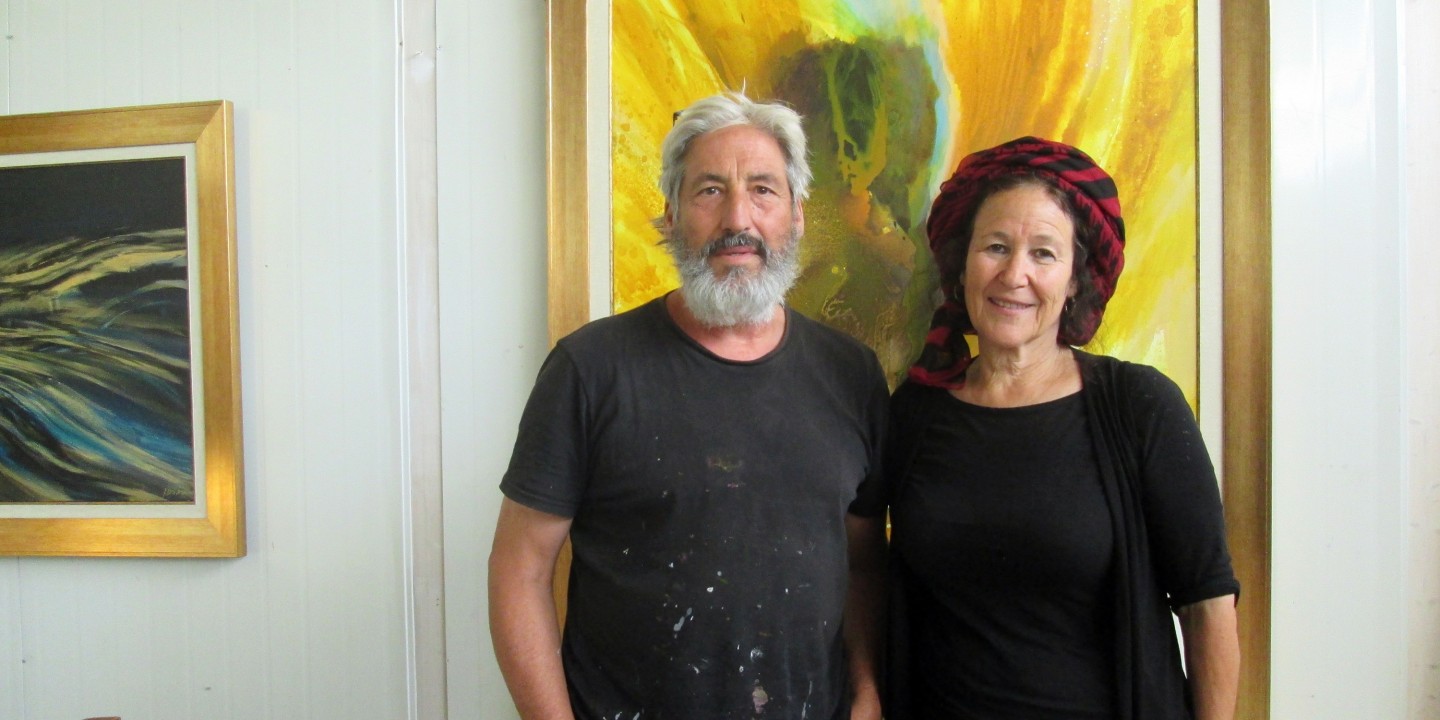After a fire destroyed his life’s work, an artist renews quest to paint Torah
Yoram Raanan lost hundreds of paintings. But from high-quality prints that remained, Meira Raanan created a book, Art of Revelation: A Visual Encounter with the Jewish Bible.

It was 2 a.m. with a fierce dry wind when firefighters ordered Yoram and Meira Raanan and other residents of Moshav Beit Meir, a small communal village nine miles west of Jerusalem, to evacuate their homes.
As they drove away Yoram, 65, an American Israeli artist, saw his studio go up in flames.
As the couple fled, navigating their way through back roads edged in on both sides by flaming trees, Yoram told Meira, “Gam zu l’tovah” (“everything is for the best”)—even when it doesn’t seem so.
“In my heart I felt something good would come out of this,” Yoram Raanan said.
Most of his life’s work—more than 1,500 paintings and 2,000 drawings, watercolors, and prints—was destroyed in minutes. Among them were 160 paintings inspired by the Torah’s weekly parasha, a section of the Torah read in synagogues, created over a three-year period. Another five in that series survived, along with the house.
Raised in Passaic, New Jersey, by parents he calls “Conservadox”—somewhere between Conservative and Orthodox—Raanan spent his summers at Jewish camp but became disillusioned with Judaism as a teenager. He thought it was hypocritical that his family kept kosher at home but ate fish at nonkosher restaurants.
Read our latest issue or browse back issues.
“Judaism wasn’t inspiring me at this point,” he said. “I was an angry young man. I said, ‘Goodbye, I don’t need you.’”
For a while, art and the Grateful Dead filled the place religion once held.
“They opened my subconscious and superconscious mind,” Raanan said, his eyes bright. “It transported me to a different world.”
After graduating from art school, Raanan embarked on an around-the-world trip. He stopped in Israel.
“I fell in love with the country; I felt at home,” he said. “In America people would ask me if I’m Jewish” in a way that never felt comfortable. While in Jerusalem, Raanan enrolled in an Orthodox yeshiva that encouraged reflection and debate related to the Jewish texts and Jewish practice.
“For the first time in my life I came into contact with people who were as passionate about the Torah and commandments as I was about art, and it was inspiring,” he said.
Raanan spent the first half of every day studying Jewish texts and the second half making art. At first he depicted landscapes, realistic scenes from synagogues and portraits of the large ultra-Orthodox families he saw in the park. Gradually his style became less literal.
“For the past 25 to 30 years, I’ve been a contemporary biblical expressionist,” he said.
Immediately after the fire, Raanan painted mostly in earth tones sprinkled with gold. His more-recent paintings, created with a new sense of purpose, are brighter and more reminiscent of his pre-fire style.
Meira Raanan was heartbroken by “this great loss to Jewish art history,” but her husband’s belief in God has strengthened her own.
“Because he had such a positive attitude, so much courage and faith and vision, it affected me in a very spiritual way,” she said.
Although the blaze put an end to their dream of exhibiting the Torah-portion paintings in an international venue, it motivated her to create a coffee-table book using high-quality prints of the paintings stored at their printer’s office. The result is Art of Revelation: A Visual Encounter with the Jewish Bible, a glossy 235-page book divided into five sections corresponding to the five books of the Torah.
The painting Noah’s Ark Amid the Deluge, for example, portrays the downfall of civilization with surging reds and its redemption with a calmer blue sea. A black jewelry box representing the ark hangs precariously over the ocean from a thread, showing that all living things depend on God’s mercy.
In the painting Crossing the Sea, brilliant blues and greens depict the Israelites’ exodus from Egypt. The accompanying text reads, “The crossing of the sea represents trusting the process of breaking through to find and reveal what is concealed within.”
Thumbing through the pages, Yoram Raanan said the book “is living proof of an endeavor. It makes the paintings alive to a greater audience. ... It’s a reminder that the work didn’t really die, that the Torah doesn’t die. It’s a physical reminder of eternity.” —Religion News Service
A version of this article, which was edited August 8, appears in the print edition under the title “People: Yoram and Meira Raanan.’”






